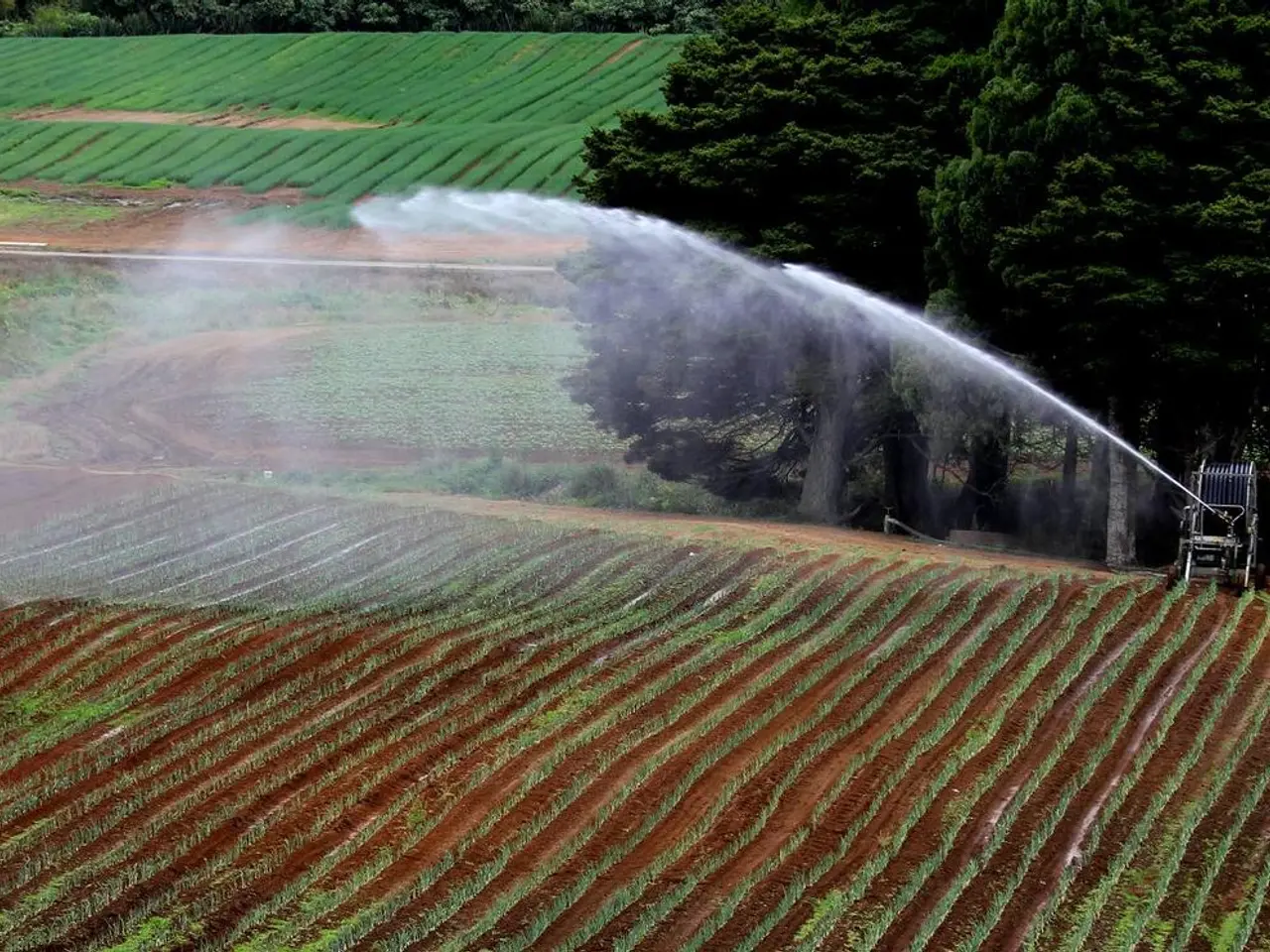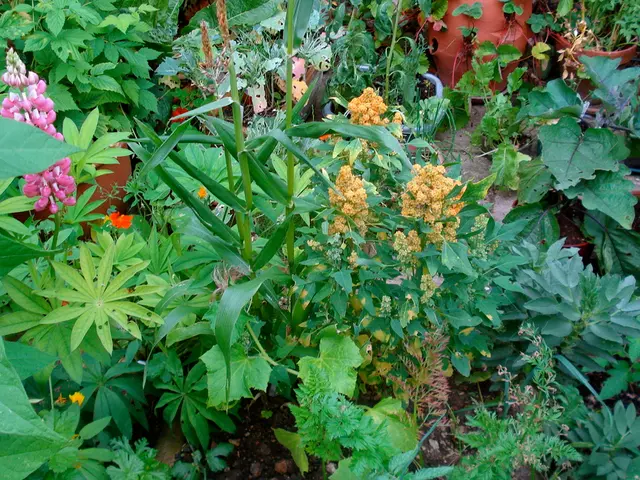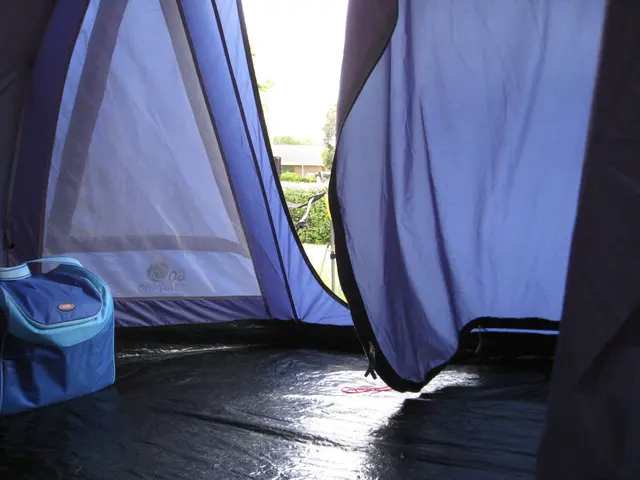Employing Greenhouse Structures for Natural Agriculture: A Sustainable Approach
Hoop shelters, also known as hoop houses or polytunnels, are revolutionizing organic farming in India. These tunnel-framed structures, made by bending flexible lines or metal bars into arcs and covering them with a layer of plastic, fabric, or other materials, create a microclimate inside, shielding crops from harsh weather conditions, pests, and diseases.
Structural Setup and Materials
Hoop shelters are typically made from bent metal or PVC hoops covered with polyethylene film, often double-layered at 0.15 mm for insulation in cold, windy areas. This coverage protects crops from extreme weather (sun, wind, cold, rainfall) and extends the growing season by creating a controlled environment conducive to plant growth. Choosing durable materials that maintain environmental control without synthetic chemicals aligns with organic standards.
Site and Environmental Considerations
Positioning shelters where there is adequate sunlight but protection from prevailing winds is crucial. Assessing water availability for irrigation is also essential, as organic systems often rely on drip irrigation within hoops for efficient water use. Considering soil health before installation is important, as hoop shelters involve in-ground planting. Preparing the soil with cover crops and avoiding excessive tillage to preserve beneficial fungi:bacteria ratios is essential for organic soil health.
Crop Selection and Rotation
Selecting cultivars suited to protected environment growing is essential, favouring those bred or proven to perform well in high tunnels to maximize yield and quality, especially in shorter seasons. Planning crop rotations to prevent soil depletion and reduce disease pressure within the enclosed growing area is also important. Integration with outdoor soil health practices is essential.
Weed and Pest Management
Utilizing organic weed management techniques such as false or stale seedbeds before planting to reduce weed seedbank, manual cultivation, or flame weeding as mechanical options under or near the hoop is necessary. Pest control should focus on integrated pest management strategies suitable for enclosed environments, including physical barriers, encouraging beneficial insects, and organic-approved treatments.
Irrigation and Climate Control
Establishing irrigation systems consistent with organic practices — often drip irrigation — to conserve water and limit disease caused by excess moisture is essential. Ventilation is critical to prevent overheating and to control humidity, reducing disease incidence while maintaining a favorable growing environment.
Monitoring and Adaptation
Considering using sensor technology for microclimate monitoring (temperature, humidity, soil moisture) to optimize conditions while minimizing energy inputs is recommended. Regularly observing crop performance and environmental conditions to adapt management practices and maintain organic certification standards is essential.
Monitoring and Maintenance
Farmers should continuously monitor the quality of the soil and its temperature levels to guarantee optimal growth conditions within the hoop shelters. Hoop shelters require regular maintenance to maintain optimal production conditions. The materials can deteriorate over time due to UV rays, wind, and other common elements.
Initial Costs and Climate Limitations
Some farmers, especially those with limited resources, may find the initial cost of hoop shelters prohibitive. Hoop shelters may not be suitable for all conditions, especially in exceptionally hot or cold regions. Additional warming or cooling structures may be necessary.
Benefits of Hoop Shelters in Organic Farming
In organic farming, hoop shelters can extend growing seasons, reduce pest and disease pressure, conserve water, improve soil health, and yield higher-quality produce. While there are challenges associated with their use, the benefits consistently outweigh these obstacles, especially for farmers who have focused on adopting sustainable practices. Hoop shelters are likely to become a commonplace feature on farms throughout India, contributing to the widespread awareness and advancement of sustainable farming practices.
- Hoop shelters, a key component in organic farming in India, are designed using materials such as bent metal or PVC hoops covered with polyethylene film, chosen for their durability and ability to maintain environmental control without synthetic chemicals.
- In organic farming, hoop shelters promote health-and-wellness by creating a controlled environment that extends the growing season, shielding crops from harsh weather conditions, and improving plant growth through temperature regulation.
- To optimize lifestyle benefits in and around hoop shelters, farmers should position them where they receive adequate sunlight, protection from prevailing winds, and consider water availability for efficient irrigation using methods like drip irrigation.
- Adopting hoop farming contributes to food-and-drink sustainability by rotating crops to prevent soil depletion, utilizing organic weed management techniques and pest control strategies, minimizing water usage, and fostering beneficial fungi:bacteria ratios in the soil.
- The home-and-garden aspect of hoop farming offers the opportunity to adapt to changing environmental conditions by monitoring microclimate factors such as temperature, humidity, and soil moisture with sensor technology, all while maintaining soil health and producing high-quality produce without compromising organic standards.






